1.2.1. Terms
In the following paragraphs we introduce some terms you have to be aware of when using the World Wide Web. The following terms will be explained: World Wide Web, Web Page, Web Browser, Hypertext Markup Language (HTML), Web Server, Hypertext Transfer Protocol (HTTP), Uniform Resource Locator (URL).
World Wide Web
|
"The World Wide Web – normally abbreviated to "the Web" or sometimes "the Net" - is a vast collection of electronic documents each composed of a linked set of pages written in HTML. The documents are stored in files on many thousands of computers that are distributed around the global Internet" (HALSALL 2005, p. 568) |
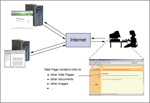 World Wide Web World Wide Web |
Web Page
|
"A Web Page is a "page" of the WWW,
usually in HTML / |
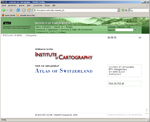 Web Page Web Page |
Web Browser
|
A Web Browser is a software application that runs on the user machine and enables the user to display and interact with Web Pages hosted by Web Servers. "A Web browser locates and fetches each requested page and, by interpreting the formatting commands that the page contains, the page contents are displayed." (HALSALL 2005, p. 570) There are a number of browser programs available such as Mozilla Firefox, Opera, Internet Explorer, etc. |
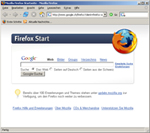 Firefox Browser (Firefox) Firefox Browser (Firefox) |
Hypertext Markup Language (HTML)
HTML is used to define how the
contents of each Web Page are displayed on the screen of the user's machine and
to set up the ![]() hyperlinks with other pages.
(HALSALL 2005, p. 569)
hyperlinks with other pages.
(HALSALL 2005, p. 569)
 HTML Code HTML Code |
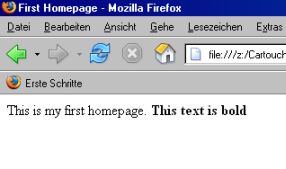 HTML in Browser HTML in Browser |
Web Server
|
A Web Server is a computer permanently connected to the Internet on which Web sites are stored and accessed. (Kudos Webdesign) The Web Server manages requests from the browser and delivers HTML documents and files in response using HTTP. (PC Magazine) |
 Web Server Web Server |
HyperText Transfer Protocol (HTTP)
|
HTTP is the protocol used by a browser program to communicate with a server program over the Internet and is based on IP and TCP. (HALSALL 2005, p. 569) |
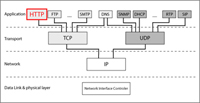 HTTP in the Protocol Hierarchy HTTP in the Protocol Hierarchy |
Uniform Resource Locator (URL)
|
"A URL comprises the name of the file and the location of the server on the Internet where the file is stored." (HALSALL 2005, p. 569) |
 Example of URL Example of URL |
With the understanding of the listed terms we will explain you the principle of the World Wide Web in the next chapter.
